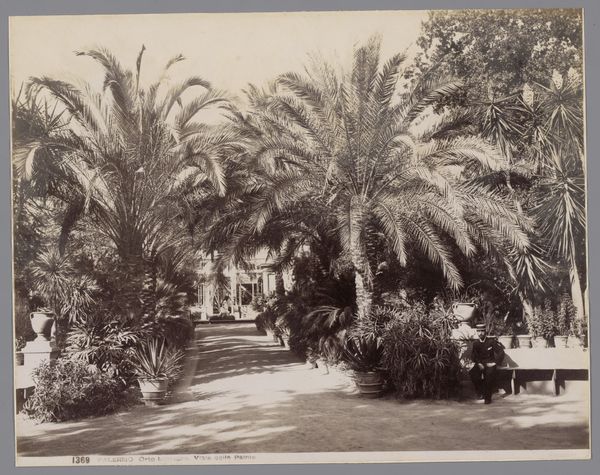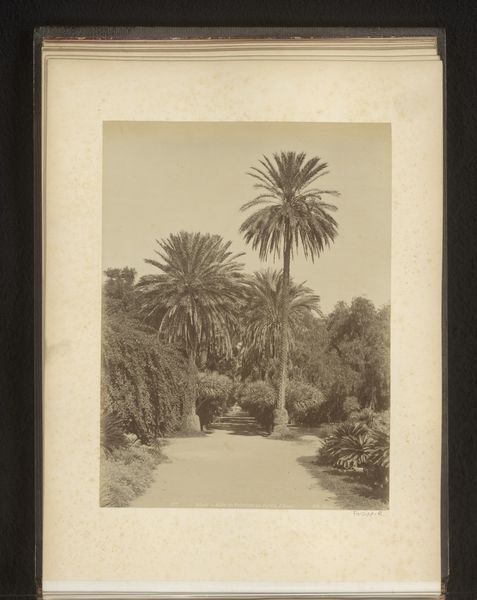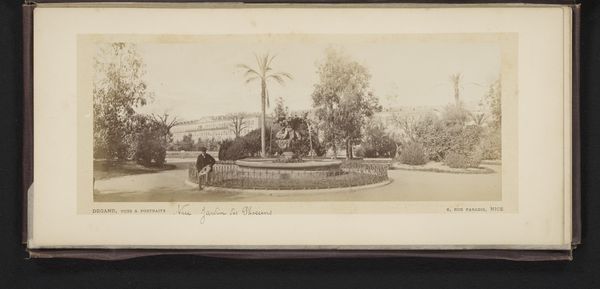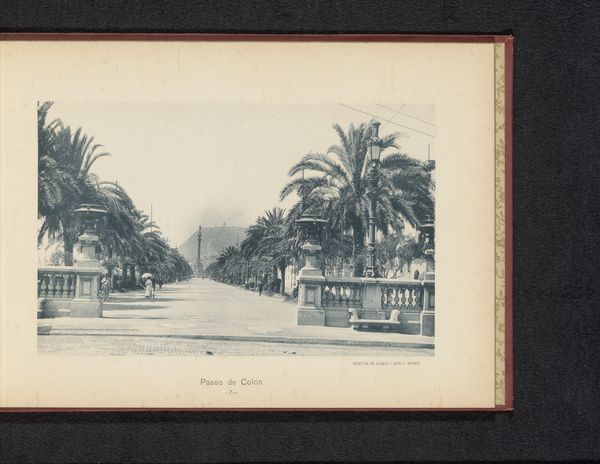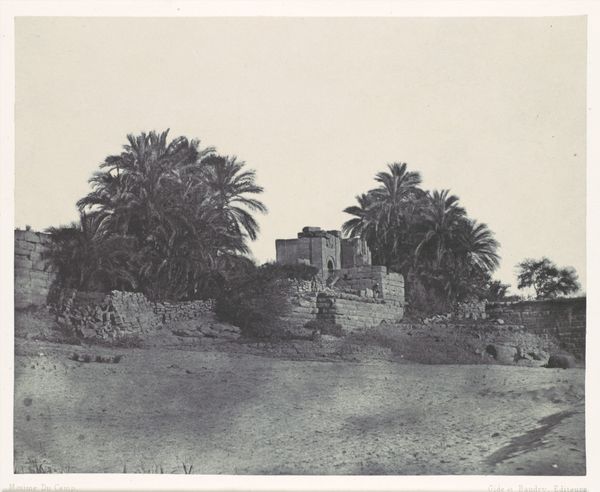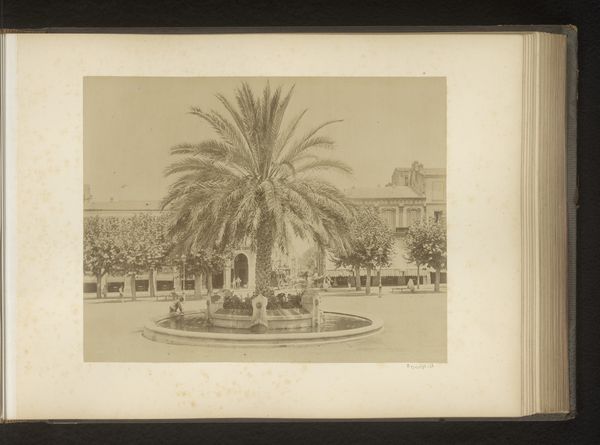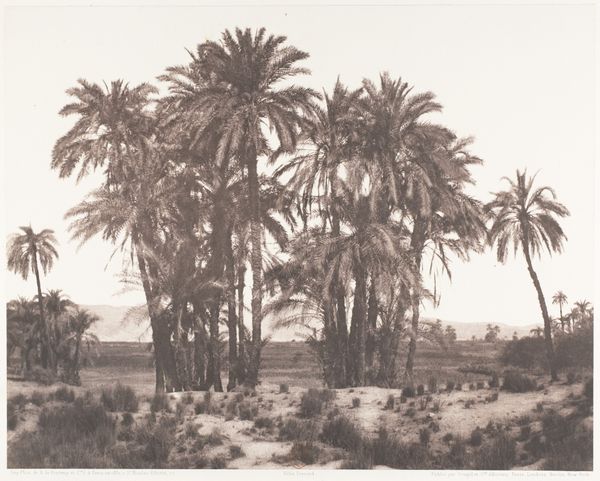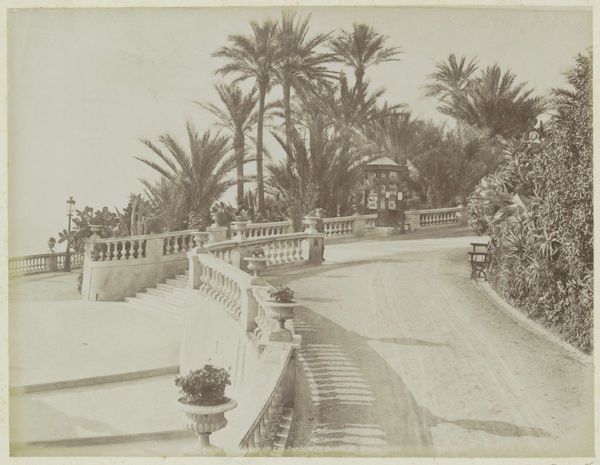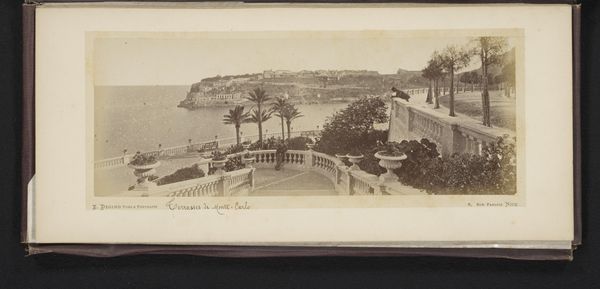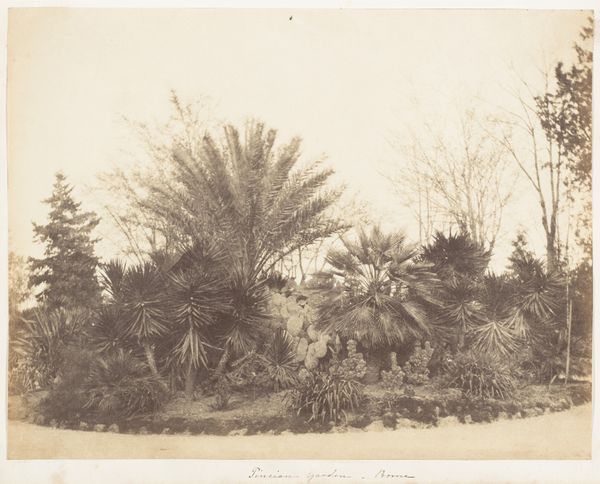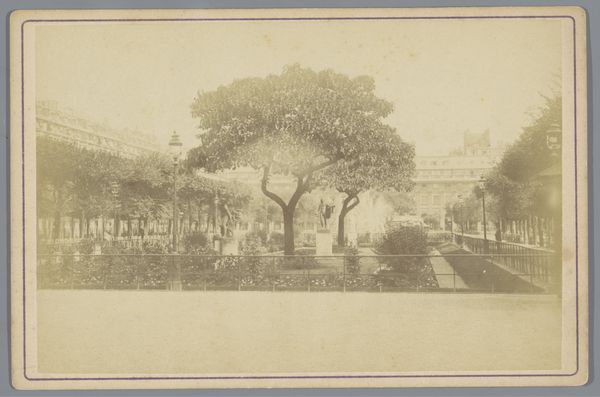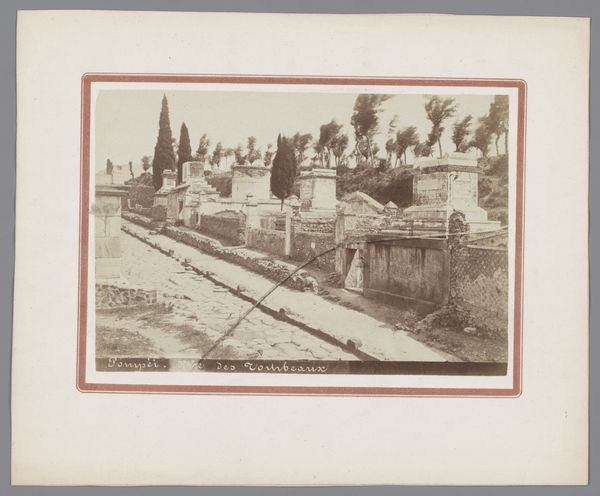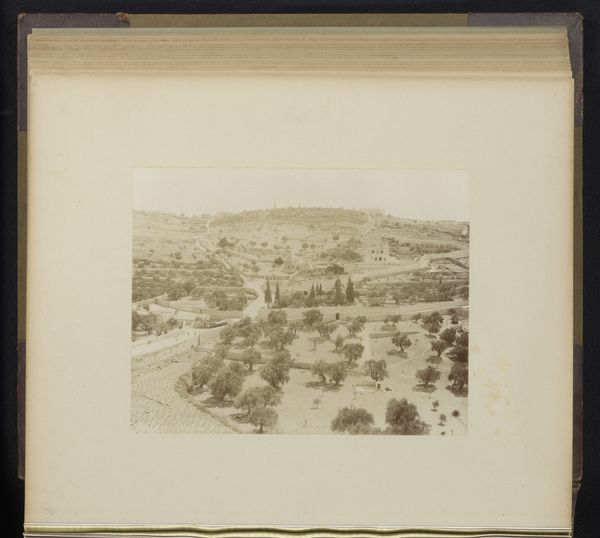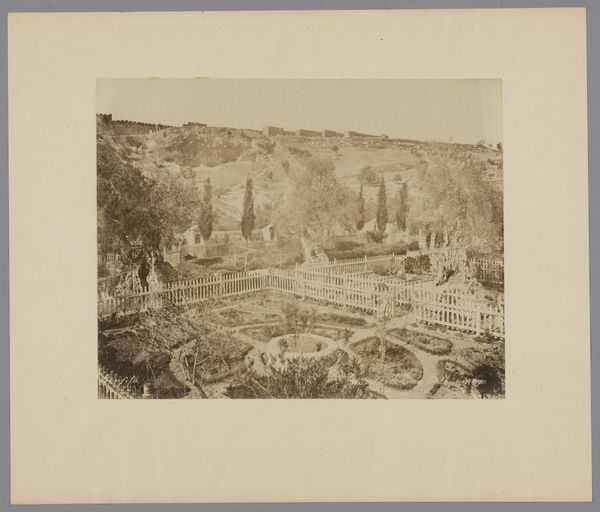
photography, albumen-print
#
impressionism
#
landscape
#
photography
#
coloured pencil
#
orientalism
#
albumen-print
Dimensions: height 68 mm, width 107 mm
Copyright: Rijks Museum: Open Domain
Editor: Here we have "Botanische tuin, Saint-Mandrier-sur-Mer", an albumen print photograph created sometime between 1862 and 1876 by Jean Andrieu. The tiered garden landscape feels both ordered and expansive, and there’s a figure in the midground that anchors the whole scene. What historical narratives might this image unlock? Curator: It's interesting that you note the figure. The presence of that solitary person is key to understanding this image's potential role in shaping public perception. During this period, photography was becoming more accessible, yet images of foreign locales were often presented through a colonial lens. Editor: So, are you suggesting this could be an example of "Orientalism"? I notice the palm trees, perhaps feeding into that aesthetic. Curator: Precisely. Think about how botanical gardens themselves functioned. They weren't just places of leisure; they were also spaces for the classification and display of exotic plants, reflecting a European desire to understand and control the natural world. Consider also the power dynamics inherent in the act of photographing this garden. Who was invited to visit? Whose gaze does the photograph cater to? How does this image play into broader socio-political agendas of the time? Editor: That’s fascinating. I hadn’t considered the power structures implicit in seemingly innocuous landscape photography. What about the photographer’s intent? Curator: We can't know Andrieu's individual intentions with certainty. But we can look at the image as a cultural artifact, examining its circulation and reception to understand the impact it had on shaping ideas about the "exotic" and the relationship between Europe and the rest of the world. Editor: I see! I’m now understanding the photo not just as a pretty scene, but as a potential tool for reinforcing particular social and political viewpoints. Curator: Exactly! And by recognizing those undercurrents, we can begin to unpack the complex layers of meaning embedded within it. It reminds us that art is never created in a vacuum, and is subject to the conditions that allowed it.
Comments
No comments
Be the first to comment and join the conversation on the ultimate creative platform.
